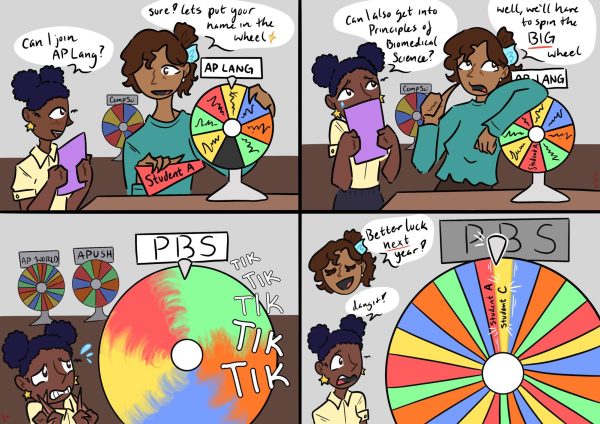Bay Area needs to do a better job battling homelessness
Santa Rosa in Sonoma County offers a blueprint for others to follow
Opinion columns reflect the view of the staff writer.
Homelessness is an issue that we in the Bay Area have become all too familiar with, from seeing a homeless person laying on a park bench to marveling at the vast amounts of tents on the sides of highways. Our family trips to San Francisco often include witnessing tents lined up along streets and gathering some dollar bills to hand to homeless people huddling in the cold.
Unfortunately, these experiences are becoming a statewide crisis.
As the COVID-19 pandemic continues to unemploy and evict thousands of American citizens from their homes, the increase of homelessness progresses. The Bay Area’s ongoing homelessness crisis sets us as the third largest population in the country for the most people experiencing homelessness. The Annual Homeless Assessment Report recorded that as of 2020, California accounts for more than half of the homeless population in America, nearly nine times the amount of homeless people in Texas, the state with the second-highest population.
Once a reliable place of refuge, homeless shelters have become prone to the coronavirus with their confined spaces and large capacities of sometimes hundreds of people. Homeless shelters in California have begun to not only cease the admittance of new people, but have even shut down entirely in hopes to lower the risks of COVID-19 spreading.
Without homeless shelters, the need for solutions to reduce homelessness is at an all-time high.
The safer alternatives are single shelters so individuals will not only have a roof over their head but walls close to their sides, an investment counties all across the Bay Area need to establish in order to save hundreds of lives while suppressing the spread of the virus in the process.
An effective approach taken by Santa Rosa in Sonoma County was turning areas of unoccupied spaces into small neighborhoods of single tents designated for unsheltered people in need of a temporary shelter.
Last year, over the course of six months, Santa Rosa was able to successfully initiate its approved $680,000 plan of 68 tents all spaced 12 feet apart in the empty parking lot of Finley Community Center. Dozens of unsheltered people have come and left, all respecting their restrictions of an 8 p.m. curfew and coronavirus safety measures for their additional meals and access to portable bathrooms and showers.
At first, residents of Finley Park opposed homeless people populating their areas, fearing their family’s safety and arguing that neighborhood tennis courts, picnic grounds and pools would unjustly be open to strangers. But after the homeless camp was established, their opposition ceased and they began to show empathy and acceptance toward their new tented neighbors through donations of clothing, foods, and other goods.
Provisions, management, and embracement was all it took for Santa Rosa to create a safe and efficient community to show their support and caring for their number of unsheltered citizens.
Other counties in the Bay Area need to see Sonoma County as a blueprint and take the necessary steps to keep homeless people alive and well, too.
San Francisco’s response to their increasing population of homeless citizens turned to ideas opposite of Sonoma County’s, but is proving to be just as essential.
City officials claim that through San Francisco’s plan, the amount of tents occupied by homeless people across the city is at a 65 percent decrease. To put that into perspective, that’s 383 tents as of April 2021, compared to the 1,108 tents recorded in April 2020.
The reason for this? San Francisco’s quick actions of finding various locations to house homeless people during the start of the pandemic.
Since the beginning of the pandemic, San Francisco’s extensive efforts temporarily housed more than 10,000 homeless people in trailers, hotel rooms, safe sleep sites and new emergency shelters. All of the options are perfect for homeless people not only to have their personal space, but also to contain the spread of COVID-19.
On top of that, San Francisco continues to execute the Homelessness Recovery Plan, which has the biggest development of permanent supportive housing in 20 years. Currently, its aims are to create 6,000 new locations to house the homeless as well as to lease or purchase 1,500 units that provide supportive housing between June 2020 and June 2022.
As of now, San Francisco’s homeless provisions have achieved 27 percent of their new placements goal at 1,600 new placements and 51 percent of their new permanent supportive housing units goal at 700 new permanent supportive housing units.
A new coalition formed by Bay Area social justice advocates, mayors, housing experts, and business leaders promises a plan that intends to house 75 percent of homeless people in the Bay Area by 2024.
This plan, called the Regional Action Plan, issues various resources for people in need of housing. Financial services, legal services, and several options for permanent housing are all available for struggling families.
The Regional Action Plan has three steps to achieve their goal to ensure the prevention of the
Bay Area’s homeless crisis:
- Interim Housing: Temporary housing will be funded for people living outdoors as soon as possible.
- Permanent Housing: Families in interim housing will be given options for their futures regarding their housing solutions. A single unit of interim housing will have two houses designated for permanent housing.
- Preventing Homelessness: Families at high risk of homelessness will be kept housed by interventions, such as financial assistance with additional legal services. A single unit of interim housing will have four homeless prevention units for families.
From these measures, a new framework is introduced, one that reevaluates how existing resources are being allocated for federal and state investments in the future. This framework is not only in favor of reducing the current homeless, but also in reducing the overall risks of people becoming homeless. This once-in-a-lifetime movement is a greatly beneficial plan to disrupt the ongoing cycle of housing instability, and must be underway as soon as possible.
Concerns regarding drug and substance abuse and psychological conditions is yet another unfortunate and existing factor among homeless populations left untreated and overlooked.
With the seemingly never-ending pandemic, poor mental health is becoming a virus itself, gaining numerous articles and Instagram posts in attempts to revive mental health that have seen much stronger days when COVID-19 didn’t exist. Poor mental health leads to the damaging addictions of drugs and alcohol.
Depression along with various other mental illnesses continue to have a steadily increasing rate in California teenagers. More than 50 percent of adolescents in California subjected to serious episodes of poor mental health never receive treatment, leading them to the self ‘medications’ of drugs and alcohol. Addictions disable people from handling a stable job, resulting in poor income, guiding them to a greater risk of homelessness and withdrawal from getting real help in preventing their possible homeless futures.
To address the issue of drug and substance abuse leading to homelessness, more treatment needs to be accessible to the public. Supervised consumption services (SCS), or safe injection facilities (SIFs), as well as overdose prevention programs need to have more support from counties. These facilities improve the health and livelihoods of citizens with little to no control over their use of dangerous substances while also saving those same people from the risks of becoming homeless.
An estimated 22,000 people in San Francisco use injection drugs, leading to numerous fatal overdoses that have increased in more recent years. The pandemic forcing everyone to isolate themselves at home has only expanded the risks of overdoses.
Supervised consumption services have unquestionably saved many lives from deadly drug usage, as proved by San Francisco’s own SCS. A study in which analyzed the death rates caused by overdoses within the two and a half years before and after the SCS opened discovered that overdose rates went down by 35 percent (within 500 meters in range of the facility).
Unfortunately, facilities like these are not always supported by U.S. federal laws and have been followed by various controversies of endangerment in communities. Regardless, the Bay Area accompanied by community members and public leaders are pushing for safer consumption spaces to reduce the overall risks of drug abuse, caused mainly from poor mental health, resulting in homelessness. Through urging the California Legislature to pass the AB 362, Oakland and San Francisco will be allowed to manage safe spaces for consumptions, an act city officials need to support.
With the Bay Area and California’s poor reputation of leaving homeless people on the streets to fend for themselves, more measures need to be taken to abate the rising numbers of homelessness.
More counties need to apply their powers to establish the progress of permanent housing, measures that are being proven as successful by Sonoma County and San Francisco. Supervised consumption sites need to expand beyond San Francisco and across the Bay Area.
No more people can be left homeless, and there can be no more neglect from the Bay Area.

Senior Gaby Jimenez is the Opinions Editor for The Californian. She has been writing for the paper since sophomore year and has been Opinions Editor since...

